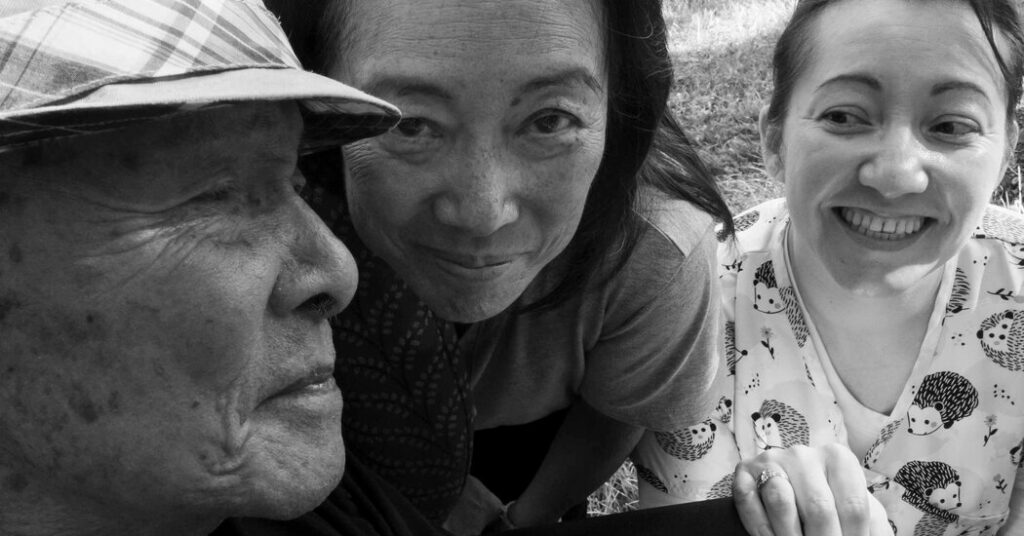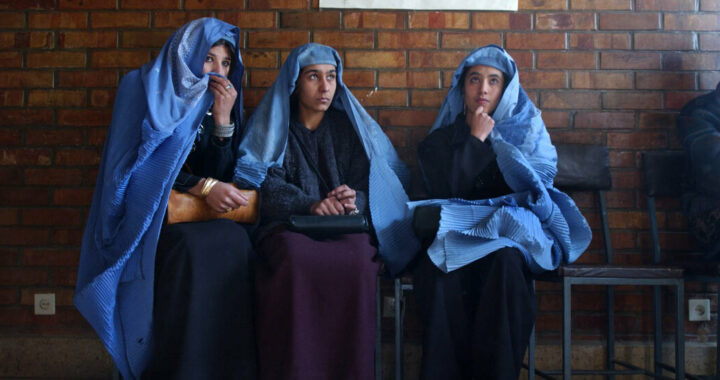Opinion | You Shouldn’t Have to Take Care of Your Aging Parents on Your Own
8 min read
Most people don’t like to think about growing old. But when asked, most Americans 55 or older say they want to do so at home. The appeal is understandable. Aging in place, surrounded by familiar places, faces and memories, can provide a sense of comfort and independence. It may seem a modest ambition, but the logistical and economic realities are daunting. Even healthy older people may struggle with basic tasks of daily life, so most of them will, at some point, require help from a caregiver, paid or unpaid, to remain at home.
Providing this care is a monumental endeavor, one for which American society is ill prepared. Already, around 42 million Americans are providing informal support to someone 50 or older, and many of them are struggling under the financial and psychological pressure. That number will only grow as the nation ages. Being an aging nation also means becoming a nation of caregivers, one that requires a new system of support.
For most older Americans, care will come from unpaid family members or friends, who contributed around $600 billion worth of free labor to the economy in 2021, according to AARP. That care is not, of course, free for those providing it.
Dwane Hodges is a 62-year-old educator in North Carolina who spent over a decade looking after various elders in his family. Starting in the mid-1990s, he spent several years caring for his mother, who suffered from schizophrenia and lung cancer. With increasing frequency, he shuttled between his home in upstate New York and hers in South Carolina, taking her to medical appointments. “Once her cancer diagnosis got bad,” he recalled, “I started going down anywhere from every three months to every six weeks.”
Along the way, he went through a divorce, and the financial burden of his caregiving duties led him to bankruptcy. In the weeks just before his mother’s death, in August 1998, Mr. Hodges was in the midst of a custody battle and didn’t have the money to fly down to be with her. Four years later, he was diagnosed with leukemia. He believes that the stress of the divorce and caregiving played a role in his faltering health.
In 2005, while on disability, Mr. Hodges moved to North Carolina to care for two aunts. After the older aunt died, the younger one moved into his home in 2011 and spent the next seven years dependent on him for almost everything. “She didn’t want to visit other relatives or stay with them because she didn’t want them to know how helpless she was,” he recalled. Until her death in 2018, he said, his life was consumed by his job, and he felt trapped at home by his caregiving duties. With the exception of a couple of big events, like his son’s high school graduation, he said, he went “three straight years without spending one night outside of the house.”
While the details of each caregiver’s story are unique, the stressors they face are painfully common. Family caregivers spend around a quarter of their income on caregiving expenses, according to a 2021 study by AARP, with rent or mortgage payments, home modifications and medical payments accounting for much of the burden.
In addition, time spent looking after loved ones is time spent away from paid work, and this costs informal caregivers an estimated $522 billion annually in lost wages. Many suffer serious financial hardship and report a decline in their physical and mental health. Caregivers are at increased risk for serious illnesses, such as depression and cancer, and suffer a higher mortality rate than noncaregivers.
The role is getting only more demanding and complex. As the American health care system continues to shift medical procedures from hospitals to home settings, providing complex care increasingly falls to family members. They may find themselves managing injections, dressing wounds and handling IV lines and ventilators. Caring for dementia patients presents its own class of stressors. Most unpaid caregivers handle these duties with little if any instruction, adding to their anxiety and affecting the quality of care.
In addition to the unpaid care provided by their families, many older people also need some paid help, if only to provide respite. But the caregiving labor market is a disgrace, plagued by high turnover and worker shortages, all of which were made worse by the pandemic. Even before Covid, the number of job openings in the field was on track to reach 8.2 million by 2028. Central to the problem is that these jobs are poorly paid and extremely difficult. The median annual pay for in-home aides is $29,430 and should be much higher. Many workers must rely on public assistance, and around 15 percent of them live in poverty. Working conditions are physically and emotionally grueling, injury rates are high, training is spotty, and opportunities for advancement are scarce.
In his original Build Back Better plan, President Biden called for investing some $400 billion in shoring up the home care economy, part of which would have gone toward improving the compensation and training for direct-care workers. The proposal got whittled down to $150 billion, then dropped altogether from the skinny version of the bill passed in 2022. He has included a $150 billion investment in Medicaid’s home- and community-based services in his latest budget, but with House Republicans set on slashing spending, don’t hold your breath.
In April, Mr. Biden announced a raft of executive actions to help caregivers. These include directing the Department of Health and Human Services to consider steps such as “testing a new dementia care model” that would provide for respite care and leveraging Medicaid funds to improve the quality of home health care jobs.
But this order only nibbles at the edges of the problem. Congress needs to step up. Legislation along the lines of the Better Care Better Jobs Act would provide financial incentives for states that establish better pay standards and training opportunities for caregivers, help workers organize and develop innovative programs to otherwise support the work force. Such investments are important steps toward making caregiving jobs more attractive and sustainable.
Affording paid help, even at today’s prevailing low wages, is difficult for many Americans — especially if the need stretches on for years — but the existing federal programs for older people are not designed to handle the cost of years of care at home. Medicare, the federal health insurance program for seniors and some younger people with disabilities, covers skilled medical services, not expenses related to daily living, and it pays for respite care only for hospice patients. Most of the federal money available for long-term care comes through Medicaid, which is a joint federal and state venture. The Department of Veterans Affairs has additional programs for people looking after former service members. But Medicaid is aimed at the poor, leaving much of the middle class to fend for itself.
To qualify for Medicaid, single applicants in most states are expected to spend down their countable assets to no more than $2,000. This provision is a particular indignity. Older people who might have spent their entire adult lives working and trying to save for retirement often find that, nevertheless, they must effectively bankrupt themselves to qualify for help.
Many states have worked to loosen eligibility requirements for who can receive Medicaid assistance, but its accessibility varies significantly, depending on where you live. Reimbursement rates, which also vary wildly, are frequently insufficient to provide much relief. Complicating matters: While a shift toward home-based care is afoot, care in nursing homes remains the default for Medicaid. Seniors who want assistance for home- and community-based care must apply for waivers, and eligibility and benefits vary significantly by state. Unmet demand has stretched the average wait time for a waiver to 45 months, with more than half a million Americans on waiting lists.
Congress has the tools to ease the pressure. Another piece of Mr. Biden’s caregiving proposal would increase the amount of Medicaid funding going toward improving the access to and affordability of home- and community-based care. There are also legislative proposals to provide family caregivers with tax credits for their caregiving expenses and Social Security credits for those who leave the work force to look after loved ones. Other legislation would award additional funding to states that expand access to respite care. Paid family and medical leave and flexible sick leave would allow informal caregivers greater flexibility to deal with loved ones’ illnesses, postsurgical care and emergencies, like the minor falls that are so common yet potentially devastating for older people.
Federal policy is only part of the story; some states are addressing the issue aggressively. Washington State has established a public long-term-care insurance program. Last year Maine announced a pilot program that uses pandemic relief funds to reimburse family caregivers up to $2,000 for related expenditures. Thirteen states and the District of Columbia have established some type of paid family and medical leave, and around 15 allow for flexible use of sick time. Many allow qualified family caregivers to get paid for their duties, mostly through Medicaid. AARP maintains a scorecard of states’ support for family caregivers, tracking the extent to which states have embraced policies such as paid family leave and sick days, unemployment insurance for family caregivers who must leave the work force and spousal impoverishment provisions. States lagging in support policies should be looking to the front-runners for models of what works, and voters should demand it.
With more and more complex duties being heaped upon them, family caregivers also need much more training and education. Since 2014, most states have passed a version of the CARE Act, an important first step. It requires hospitals to ask patients if they have family caregivers, and, if so, to provide the caregivers with information about the patients’ discharge schedules, along with instructions regarding whatever care the patients will need after returning home. But this measure applies only to people who have been hospitalized, and implementation is uneven, with only perfunctory instruction provided in many cases. More needs to be done. The Better Care Better Jobs Act, for instance, includes incentives for states to make training more available to family caregivers.
The help that caregivers need goes far beyond the nuts and bolts of caregiving and its financial costs. They need better information on how to navigate a health care system that is complex and decentralized, along with help coping with what John Schall, a leader in caregiving advocacy, termed the “psychosocial aspects” of the work — the alienation, isolation, anger, guilt and anxiety that often come with the territory.
Caregiving is essential work in an aging society, and at some point, most of us will have to confront its challenges. No one should have to face them alone.
The Times is committed to publishing a diversity of letters to the editor. We’d like to hear what you think about this or any of our articles. Here are some tips. And here’s our email: [email protected].
Follow The New York Times Opinion section on Facebook, Twitter (@NYTopinion) and Instagram.
Larry Fink, a pre-eminent American photographer, is best known for his intimate black-and-white images.






A Special Project
from Times Opinion
Michelle Cottle is a member of the Times editorial board, focusing on U.S. politics. She has covered Washington and politics since the Clinton administration. @mcottle
Source: Read Full Article






